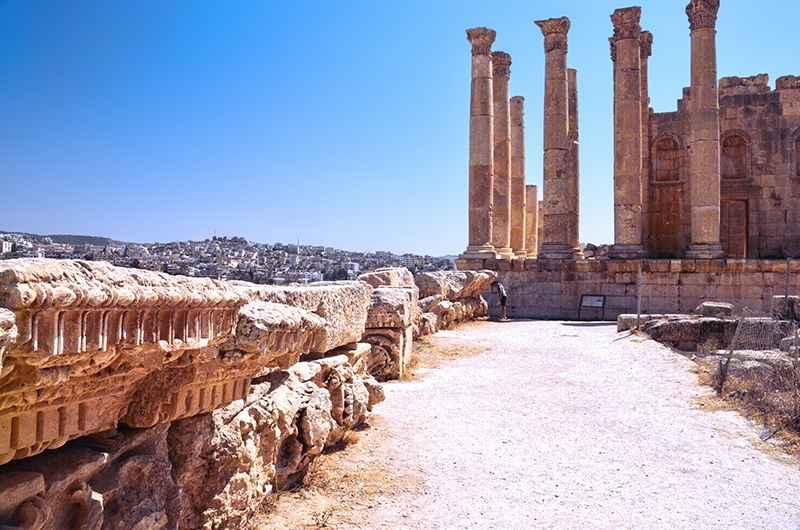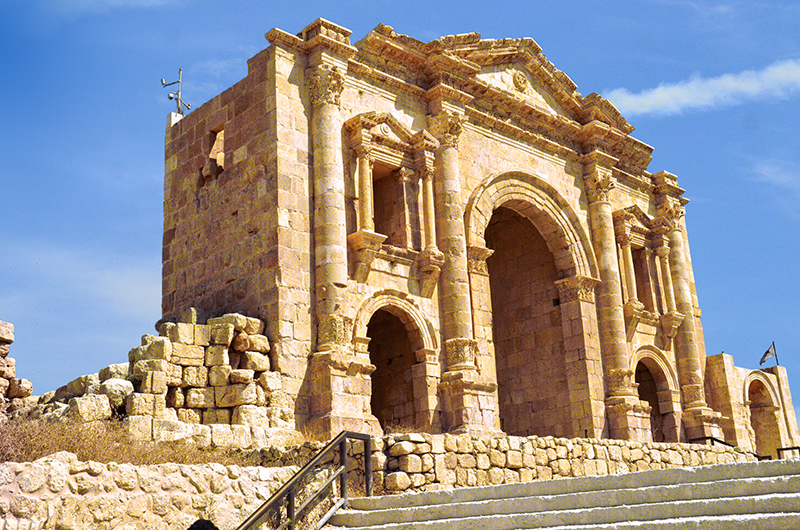



 +6
+6 The hottest day of our trip began with a stop in Jerash, Jordan’s largest Roman site. We entered through Hadrian’s Arch, an 11-meter-high triple-arched gateway that had been erected to honor the visit of Roman Emperor Hadrian to the city in the winter of 129-130. We saw the Hippodrome, a massive arena that could seat 15,000 spectators. We made our way through the ruins of the Oval Plaza, which is 90 by 80 meters and dominates one side of the city, the Temple of Artemis, a place of sacrifice built in 150, the Temple of Zeus, the South Theater, and the Temple of Dionysus.
This ancient city is said to be among the most well-preserved Roman cities in the world. Jerash (known as Gerasa in its day) was home to approximately 20,000 people and was one of the more important cities in the Roman Empire. I got a sense of life in ancient Rome in this place. But what amazed me most was the Roman’s ability to carve and erect massive pillars and stone-laid roads that have endured for centuries without the benefit of modern tools.
I had never heard of Jerash and didn’t know of its significance. Its scale is stunning, and there are countless panoramic views to behold. I was intrigued by the lack of residences. Where did the 20,000 people live, raise their families, or bury their dead? I only saw a few tombs on the tour. Certainly, not enough to accommodate a large population. But what I did see was impressive because of its expansiveness.
After spending a few hours in Jerash, we got back in the van and drove to the place where we would receive our bikes and meet our cycling guides.























